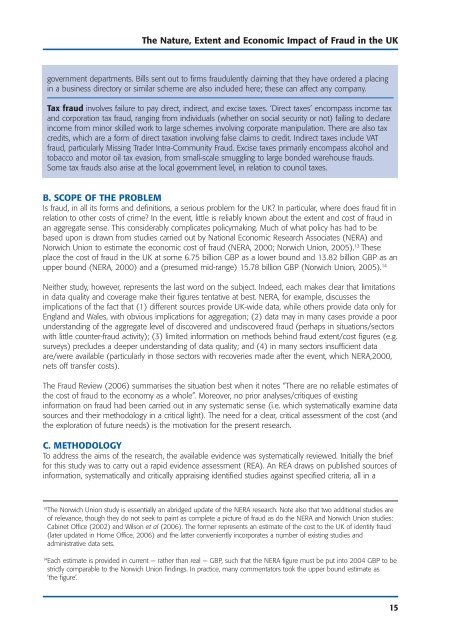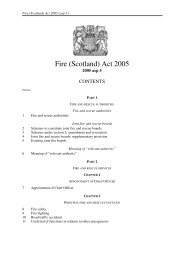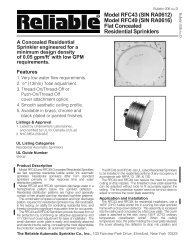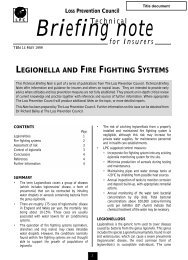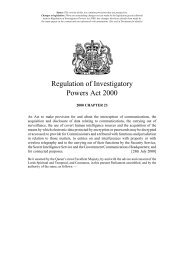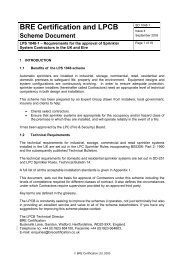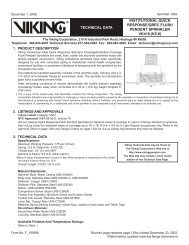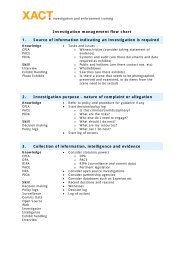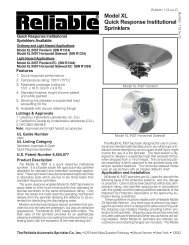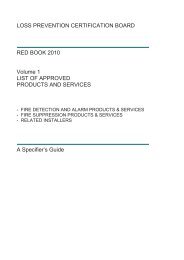The Nature, Extent and Economic Impact of ... - Cardiff University
The Nature, Extent and Economic Impact of ... - Cardiff University
The Nature, Extent and Economic Impact of ... - Cardiff University
You also want an ePaper? Increase the reach of your titles
YUMPU automatically turns print PDFs into web optimized ePapers that Google loves.
<strong>The</strong> <strong>Nature</strong>, <strong>Extent</strong> <strong>and</strong> <strong>Economic</strong> <strong>Impact</strong> <strong>of</strong> Fraud in the UK<br />
government departments. Bills sent out to firms fraudulently claiming that they have ordered a placing<br />
in a business directory or similar scheme are also included here; these can affect any company.<br />
Tax fraud involves failure to pay direct, indirect, <strong>and</strong> excise taxes. ‘Direct taxes’ encompass income tax<br />
<strong>and</strong> corporation tax fraud, ranging from individuals (whether on social security or not) failing to declare<br />
income from minor skilled work to large schemes involving corporate manipulation. <strong>The</strong>re are also tax<br />
credits, which are a form <strong>of</strong> direct taxation involving false claims to credit. Indirect taxes include VAT<br />
fraud, particularly Missing Trader Intra-Community Fraud. Excise taxes primarily encompass alcohol <strong>and</strong><br />
tobacco <strong>and</strong> motor oil tax evasion, from small-scale smuggling to large bonded warehouse frauds.<br />
Some tax frauds also arise at the local government level, in relation to council taxes.<br />
B. SCOPE OF THE PROBLEM<br />
Is fraud, in all its forms <strong>and</strong> definitions, a serious problem for the UK In particular, where does fraud fit in<br />
relation to other costs <strong>of</strong> crime In the event, little is reliably known about the extent <strong>and</strong> cost <strong>of</strong> fraud in<br />
an aggregate sense. This considerably complicates policymaking. Much <strong>of</strong> what policy has had to be<br />
based upon is drawn from studies carried out by National <strong>Economic</strong> Research Associates (NERA) <strong>and</strong><br />
Norwich Union to estimate the economic cost <strong>of</strong> fraud (NERA, 2000; Norwich Union, 2005). 13 <strong>The</strong>se<br />
place the cost <strong>of</strong> fraud in the UK at some 6.75 billion GBP as a lower bound <strong>and</strong> 13.82 billion GBP as an<br />
upper bound (NERA, 2000) <strong>and</strong> a (presumed mid-range) 15.78 billion GBP (Norwich Union, 2005). 14<br />
Neither study, however, represents the last word on the subject. Indeed, each makes clear that limitations<br />
in data quality <strong>and</strong> coverage make their figures tentative at best. NERA, for example, discusses the<br />
implications <strong>of</strong> the fact that (1) different sources provide UK-wide data, while others provide data only for<br />
Engl<strong>and</strong> <strong>and</strong> Wales, with obvious implications for aggregation; (2) data may in many cases provide a poor<br />
underst<strong>and</strong>ing <strong>of</strong> the aggregate level <strong>of</strong> discovered <strong>and</strong> undiscovered fraud (perhaps in situations/sectors<br />
with little counter-fraud activity); (3) limited information on methods behind fraud extent/cost figures (e.g.<br />
surveys) precludes a deeper underst<strong>and</strong>ing <strong>of</strong> data quality; <strong>and</strong> (4) in many sectors insufficient data<br />
are/were available (particularly in those sectors with recoveries made after the event, which NERA,2000,<br />
nets <strong>of</strong>f transfer costs).<br />
<strong>The</strong> Fraud Review (2006) summarises the situation best when it notes “<strong>The</strong>re are no reliable estimates <strong>of</strong><br />
the cost <strong>of</strong> fraud to the economy as a whole”. Moreover, no prior analyses/critiques <strong>of</strong> existing<br />
information on fraud had been carried out in any systematic sense (i.e. which systematically examine data<br />
sources <strong>and</strong> their methodology in a critical light). <strong>The</strong> need for a clear, critical assessment <strong>of</strong> the cost (<strong>and</strong><br />
the exploration <strong>of</strong> future needs) is the motivation for the present research.<br />
C. METHODOLOGY<br />
To address the aims <strong>of</strong> the research, the available evidence was systematically reviewed. Initially the brief<br />
for this study was to carry out a rapid evidence assessment (REA). An REA draws on published sources <strong>of</strong><br />
information, systematically <strong>and</strong> critically appraising identified studies against specified criteria, all in a<br />
13<br />
<strong>The</strong> Norwich Union study is essentially an abridged update <strong>of</strong> the NERA research. Note also that two additional studies are<br />
<strong>of</strong> relevance, though they do not seek to paint as complete a picture <strong>of</strong> fraud as do the NERA <strong>and</strong> Norwich Union studies:<br />
Cabinet Office (2002) <strong>and</strong> Wilson et al (2006). <strong>The</strong> former represents an estimate <strong>of</strong> the cost to the UK <strong>of</strong> identity fraud<br />
(later updated in Home Office, 2006) <strong>and</strong> the latter conveniently incorporates a number <strong>of</strong> existing studies <strong>and</strong><br />
administrative data sets.<br />
14<br />
Each estimate is provided in current — rather than real — GBP, such that the NERA figure must be put into 2004 GBP to be<br />
strictly comparable to the Norwich Union findings. In practice, many commentators took the upper bound estimate as<br />
‘the figure’.<br />
15


